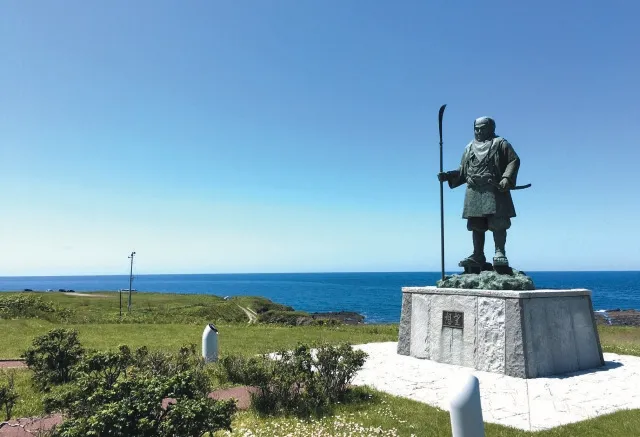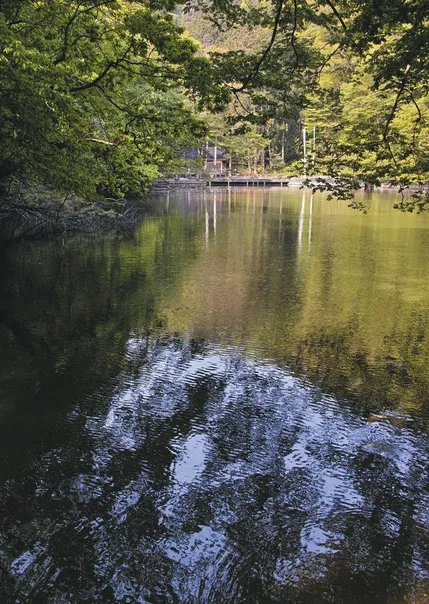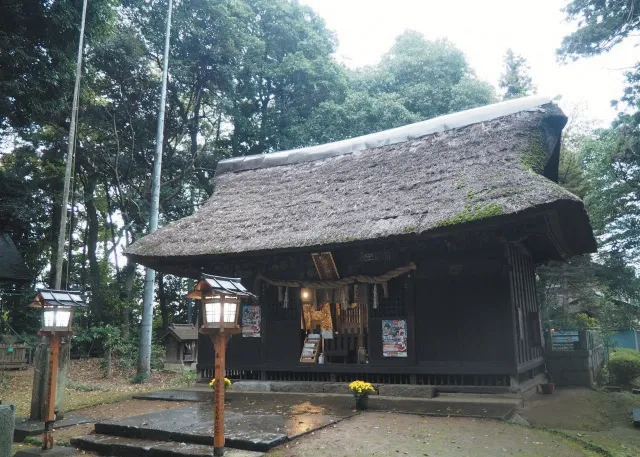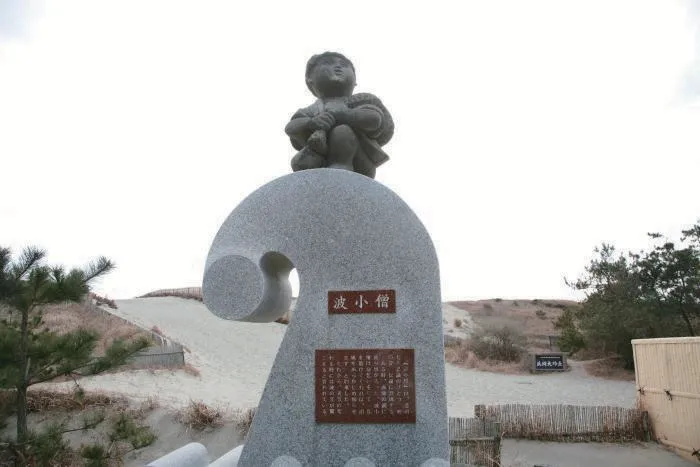11 Legends and Mysteries from Around Japan

There are many legends that have been passed down in each region of Japan since ancient times. From mysterious to scary to cultural, there are many different legends in each region. This time, we will introduce 11 carefully selected locations that have legends from all over Japan.
1. Cape Benkei (Hokkaido)
This is one of the places in the legend of Minamoto no Yoshitsune, a samurai who was active 800 years ago. At the entrance to the cape, there is a 5m tall bronze statue of Benkei, Yoshitsune's retainer. The cape area was called "Per Kei" by the indigenous people because of its topography, meaning "the broken place," and it is said that this name was later pronounced "Benkei" by later generations, which is how it became connected to the legend of Yoshitsune.

2. Mannenji Temple (Hokkaido)
This temple is home to the Okiku doll, a famous Japanese mystery doll with growing hair. It looks like an ordinary temple, but it is not clear whether the doll's hair really grows. Since the doll has a soul, it is said that it "hates being photographed" and therefore does not look good in photos, so photography is prohibited.
3. Tono Denshoen Silkworm Shrine (Iwate Prefecture)
Tono Denshoen is a facility that recreates the lifestyle of farmers in the Tono region, and is a nationally designated important cultural property. Within the park is a building called "Oshira-do." Oshira-sama is a deity worshipped mainly by farmers in the Tohoku region, and the walls are lined with sacred objects of deities called "Oshira-sama." There are about 1,000 of them, and their intimidating presence is said to be so overwhelming that it can even affect the physical health of visitors.
4. Mr. Kashima (Akita Prefecture)
Kashima-sama is a type of deity placed by the roadside, and is a rare deity that can be found in the central and southern parts of Akita Prefecture. It is a deity statue that is rarely seen in other areas, placed on the borders of villages to ward off disasters such as epidemics. There are currently three Kashima-sama, and their bodies made of straw look like they are wearing armor, and they are carrying two swords, one large and one small, resembling samurai.
5. Kaikuiike Pond (Yamagata Prefecture)
Kaibami Pond is a sacred pond where two dragon gods who protect Zenpoji Temple are said to have rested. It is said that carp turn into dragons when they climb the waterfall, and fish with patterns resembling human faces are said to be messengers of the dragon gods. About 30 years ago, a photo of the pond was posted in a magazine, and it became a hot topic, and at the time it was so crowded that as many as 10,000 tourists visited it every day.

6. Kokuo Shrine (Ibaraki Prefecture)
This shrine was built on the spot believed to be the final resting place of Taira no Masakado, a samurai who was active over 1000 years ago. According to the shrine's history book, this is the place where Taira no Masakado was shot through the temple by an arrow during a battle on February 14, 940, and his decapitated body was carried to by horseback. The shrine was actually built 32 years after his death, when Masakado's third daughter, Nyozo-ni, carved a wooden statue of her father from a tree near the place where he died.

7: Ochiai Dosojin (Gunma Prefecture)
Dosojin, who are considered gods of prosperity, are characterized by their sexual symbolic appearance. The Ochiai no Kami, located on the pilgrimage route to Haruna Shrine in Gunma Prefecture, is a statue of a man and woman with their faces close together and embracing each other in intercourse, and has a very unique shape.
8. Onichizu Shrine (Saitama Prefecture)
This shrine was established in 1182 as a talisman to ward off evil spirits at the location of the samurai Hatakeyama Shigetada's house, which was in the direction of the demon gate. Since its founding, the shrine has been associated with demons, and local legends have handed down as the "Onichinsama." It is said to grant lasting good fortune in battle, and there is also a tradition of offering a golden club when this grant is granted. There is no doubt that this is a shrine that is very much aware of demons.
9. Ryugubuchi Falls (Toyama Prefecture)
Ryugu-fuchi in Miyajima Gorge, located upstream of the Konade River in Toyama Prefecture, is known as a sacred place. It is said that a dragon god lives in this deep pool and protects the people, and it is cherished by the local people.
10. Nami Kozo of the Enshu Sea (Shizuoka Prefecture)
One of the Seven Wonders of the Enshu region of Shizuoka Prefecture, "Nami Kozo of Enshu Nada" is a legend of a supernatural spirit associated with natural phenomena. The mysterious phenomenon of clear skies when there is a sound to the west, rain when there is a sound to the east, and a storm when there is a sound even further east is said to be related to the supernatural spirit "Nami Kozo."

11: Iwashimizu Shrine, Stone Treasure Hall (Hyogo Prefecture)
It is still unknown when and why this huge stone structure, the "Stone Treasure Hall," was built. The huge stone is 6m wide, 7m long, and 6m high, and has a mysterious shape. The fact that there is a pond at the bottom adds to the mystery.

A web media that introduces deep and nerdy travel information that even Japanese people think they know but don't. It provides information on famous places, gourmet food, and spectacular views from all over the country, along with the history, culture, and traditions of the region. https://zipangu-tourism.com/
The contents on this page may partially contain automatic translation.































![[Coupon Available] Attention Overseas Winter Sports Fans! Nagano's Sports Depot Has Evolved](https://resources.matcha-jp.com/resize/720x2000/2026/01/05-254819.webp)
![[2 hours from Tokyo ] 10 Quiet and Breathtaking Views of Mount Fuji in Yamanashi Hokuto City , Yamanashi - Part 2](https://resources.matcha-jp.com/resize/720x2000/2025/12/16-253037.webp)

![[Reopening in March 2026] Ikoma Sanjo Amusement Park Park, 45 minutes from Osaka , with free admission](https://resources.matcha-jp.com/resize/720x2000/2024/08/28-194409.webp)